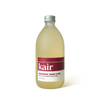Hang or Fold?
Whether you’re putting away a load of laundry, welcoming a new piece to your wardrobe, or refreshing your collection for spring, proper storage is essential, to help your clothes retain their shape and remain wrinkle-free. But should you hang your clothes in your wardrobe or fold and tuck them away in your dresser? It depends on how much space you have, what kind of garments you have and what fabrics they’re made of, and your personal preferences and habits. Read on to discover the best way to store your clothes.
Hang
~ Lightweight pieces. Hang lightweight, wrinkle-prone, flowy fabrics. That’s anything made from delicate materials like silk and chiffon (usually dresses or skirts, and shirts or blouses), as well as linen and nylon. Because these pieces have a tendency to slip off hangers, we recommend using velvet, non-slip hangers (such as these black flocked ones from Dunelm). For extra delicate items, especially silk, chiffon and lace-laden pieces, always use padded hangers (such as this generously padded cotton clothes hanger from Liberty) to protect against snagging (avoid metal, which can rust and cause distortion).
~ Most trousers. With the exception of jeans (see below), it’s best to hang your trousers, especially smart workwear pieces and formal wrinkle-prone slacks. There are two ways to hang your trousers. If there are creases or pleats running down the front, take them by the hem, fold along the creases, then drape over the hanger bar or clip the hems. If there are no creases or pleats, simply fold in half, then drape or clip in the same way.
~ Most dresses. We recommend hanging the majority of your dresses, especially long, floaty ones (see above). Use wide, rounded hangers, which will support the weight of your dresses, and make sure each garment hangs straight and without touching the floor. For particularly delicate dresses, we recommend using a clothes cover (like this one from John Lewis). This will offer some extra protection (especially helpful when travelling as well).
~ Most jackets. Jackets should generally be hung rather than folded. Folding both monopolises space (especially with large and bulky outerwear), and can also cause wrinkles and structural damage (particularly with formalwear like blazers and suit jackets). For coats made of natural materials, such as down, wool, leather and suede, hang them on sturdy wooden hangers (like these natural ones from Ikea), to help them retain their shape and remain wrinkle-free. Store them somewhere dry, dark, clean and cool (around 18ºC), to prevent moisture build-up, mould, and damage from sunlight.
Fold
~ Thick jumpers. It’s best to fold chunky jumpers, especially those made of natural fibres like wool or cashmere. Folding not only saves space in your wardrobe, but also preserves the integrity of the fibres and prevents any misshaping. Simply lay your jumper face down, then fold each arm straight across. Fold over one side to the middle, then the other side, so that the sleeve edges meet in the centre. Finally, fold up once or twice, depending on the length and bulk of your jumper, before flipping over and tucking away in a dresser or on a wardrobe shelf. If you’re putting jumpers away for the summer, pop them in an airtight container (though avoid cardboard boxes, which clothes moths love).
~ Heavy or embellished items. The exceptions to hanging dresses are knit dresses or heavy dresses of any kind, which can become stretched if hung, and are safer tucked away in a drawer. You can also fold, rather than hang, items with heavy embellishment. If you’re putting them away until next season, pop them in an airtight container or vacuum storage bag. With beaded evening dresses in particular, lay the hem first, then fold the dress, and put acid-free tissue paper between each fold to provide extra protection.
~ Activewear and performance fabrics. Fold activewear and performance, stretch and sweat-wicking fabrics, as these can stretch and become misshapen on a hanger.
~ Casual shorts. There’s no reason to hang shorts. Simply fold them in half front side out.
Hang or fold
~ Everyday t-shirts. You can hang, fold or even stack t-shirts, depending on your wardrobe space and personal preferences, as well as the fabric content of the t-shirt. For t-shirts made of 100% natural fibres such as cotton, hanging can reduce the chance of wrinkles. Use softer, wider hangers, which will reduce the distortion a narrow hanger might cause. T-shirts containing modern stretch fabrics should remain wrinkle-free when folded.
~ Heavier shirts. With shirts made of robust fabrics like cotton, you can either hang them in a wardrobe on sturdy wooden hangers, or fold them away and store on a shelf. To fold, button up all the buttons on your shirt, then flip your shirt over so it’s button-side down. Fold the sleeves across the back, then up, until the cuffs reach the collar. Then fold the sides across the middle in thirds, and your shirt up from the bottom in thirds.
~ Jeans/denim. Denim is one of the most durable and versatile fabrics, requiring relatively low maintenance including when it comes to storage. You can easily fold jeans over a hanger, but it’s equally fine to fold them, as they’re thick enough to hold their shape. The same goes for denim skirts. Hang them at the waist with clipped hangers, or fold in half.
~ Some jackets. If you’re tight on hanging space, pop nylon coats and fleeces in plastic containers, then tuck them away in a drawer or under your bed away from heat and light. Puffer coats made from polyfill, as opposed to down feathers, can also be squished down to half their size and stored in vacuum storage bags (we love this one from Lakeland).
Now you know the best way to store your clothes depending on the type and fabric, so that whether you hang or fold them, they can stay in prime condition all year round.
Cover image by Pinterest




















